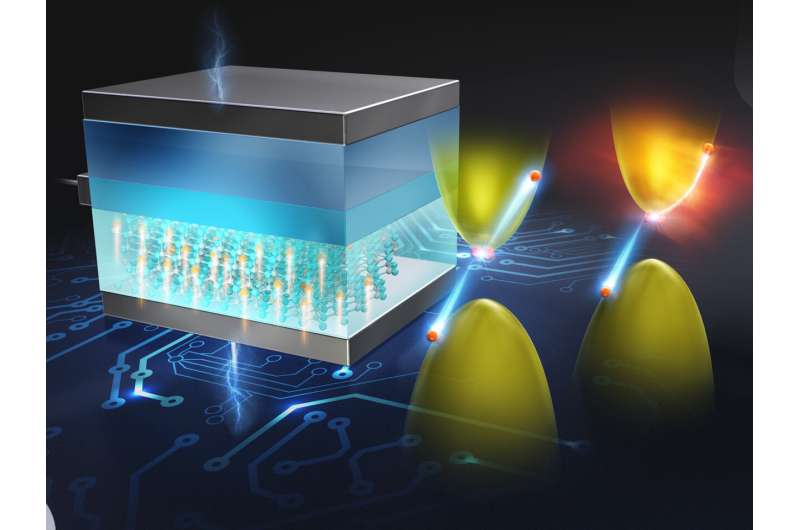Unraveling auger recombination in bipolar devices under high carrier injection

High-voltage and high-power devices are critical for more efficient and sustainable high-power operations. One candidate for such next-generation devices is bipolar silicon carbide (SiC). SiC devices have already found commercial applications, with SiC semiconductor field effect transistors and Schottky barrier diodes outperforming their silicon alternatives due to lower on-resistance and higher breakdown voltage. However, current industrial standard SiC devices are unipolar—they conduct electricity using only electrons.
Bipolar devices, which use both electrons and holes for electrical conduction, have lower on-resistance as a rule of thumb. Thus, SiC bipolar devices are expected to be the next big step in high-power devices. But, bipolar SiC device efficiency depends on the carrier lifetime, which is in turn determined by several electron–hole recombination processes, namely the Shockley-Read-Hall (SRH), surface, radiative, and Auger recombination processes.
While the effects of the SRH, surface and radiative processes can be well predicted and minimized by controlling the surface structure, polishing, and reducing the number of recombination centers, the factors leading to Auger recombination have proven more difficult to pinpoint. Current discussions on the subject suggest that carrier concentration and recombination traps are dominant forces in Auger recombination.
Recently, researchers from the Department of Electrical and Mechanical Engineering at the Nagoya Institute of Technology (NITech) have demystified the effects of carrier concentration and traps on Auger recombination rate. The research team—consisting of Associate Professor Masashi Kato, Mr. Kazuhiro Tanaka, and Mr. Keisuke Nagaya from NITech—used an optical technique called time-resolved free carrier absorption to measure the excited carrier recombination in 4H-SiC. The study has been published in Japanese Journal of Applied Physics.
“We know that the Auger process is dependent on the donor concentration under low carrier injection. Conversely, in the high injection condition, the Auger recombination rate decreases with the increase in the excited carrier concentration. But while Auger recombination coefficient has been reported experimentally by a number of researchers in the literature, it is usually reported as a constant,” explains Associate Professor Kato.
In this study, the research team observed excited carrier recombination in 4H-SiC under the high injection condition. As a result they discovered that the Auger recombination is dependent primarily on the excited carrier concentration and that the traps have negligible effects.
Speaking on the applications of the research, Associate Professor Kato says, “In order to create better high-power devices, we need to understand basic materials properties and optimize device structures. With our method, we were able to estimate the excited carrier concentration dependence of Auger recombination. We expect that this estimated Auger coefficient proves hugely useful in the development of future SiC bipolar devices with high concentration carrier injection.”
More information:
Kazuhiro Tanaka et al, 4H-SiC Auger recombination coefficient under the high injection condition, Japanese Journal of Applied Physics (2022). DOI: 10.35848/1347-4065/acaca8
Citation:
Unraveling auger recombination in bipolar devices under high carrier injection (2023, January 17)
retrieved 17 January 2023
from https://techxplore.com/news/2023-01-unraveling-auger-recombination-bipolar-devices.html
This document is subject to copyright. Apart from any fair dealing for the purpose of private study or research, no
part may be reproduced without the written permission. The content is provided for information purposes only.
For all the latest Technology News Click Here
For the latest news and updates, follow us on Google News.
